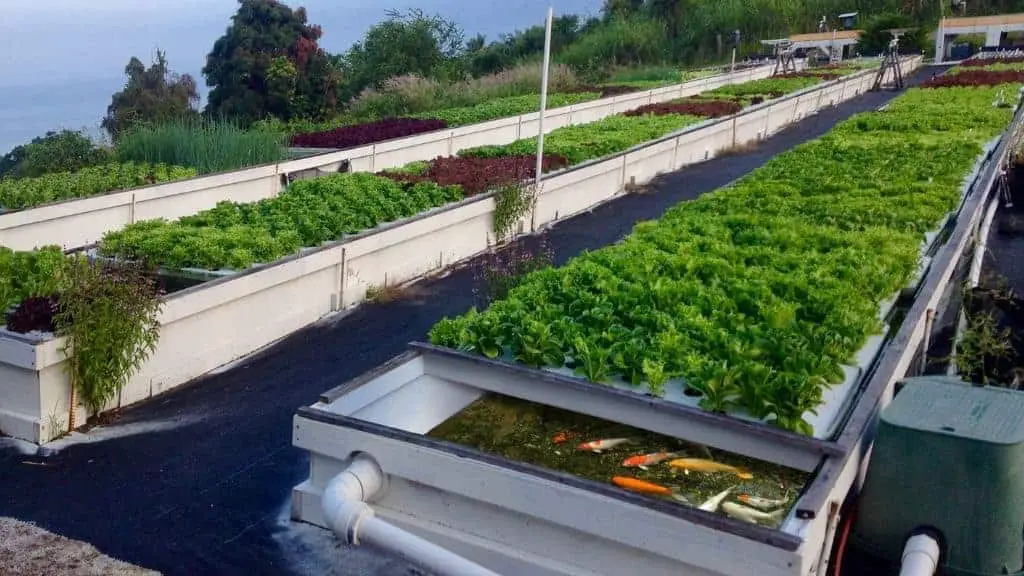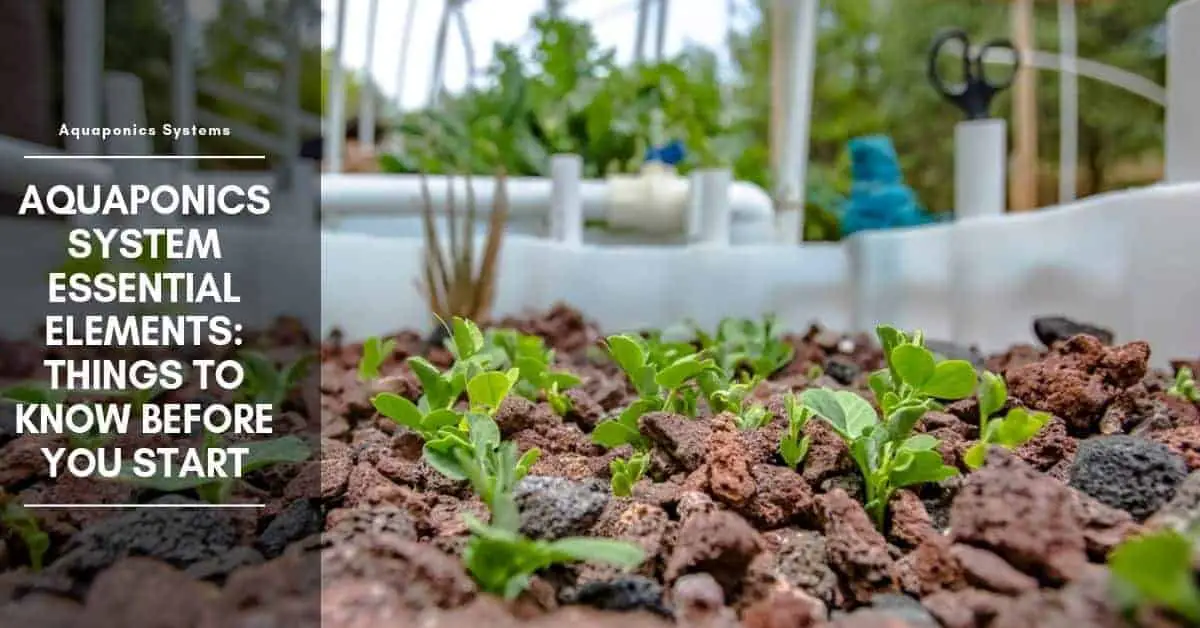While every system is different, and different plants and fish will have individual water requirements, there are many concerns that are common to all aquaponic set-ups. This post gives an overview of the things that you need to know about water quality before you begin to build your aquaponics system.
Water Parameters
Water is the life-blood of the aquaponics system. It provides the connection between fish, plants, and bacteria, and it is water quality, first and foremost, which will impact the health and functionality of the system. Although the three components of the system have slightly different preferences, water purity is a need shared by all.
Water sources
Water quality is absolutely vital for both fish and plant health. Rainwater is ideal for aquaponic systems, as it is the purest water available. However, it is necessary to test even rainwater, as many parts of the world suffer from mild acid rains and pollution.
Water from all other sources should be extensively tested, and treated as necessary, before use in an aquaponic system. Water from mains systems tends to be chemically treated, whereas water from aquifers and bores can have high levels of dissolved salts and minerals.
Common chemicals found in mains (tap) water
The majority of tap water in the Western World is chlorinated to kill bacteria and pathogens, which may be harmful to humans. However, chlorine is not just toxic to bacteria, but also to fish and many plants. If you plan to use chlorinated water in an aquaponic system, it must be treated first. Chlorine dissipates in contact with air, so by storing tap water in an open container for at least 48 hours, you can ensure that it will not harm your ecosystem. Chlorine will dissipate more quickly if the water is aerated.
Another common disinfectant used in drinking water is chloramine. Chloramine is not as easy to remove as chlorine, and if it is used in your area, you will need to invest in sodium metabisulfite tablets or an active carbon water filter.
Some countries use alternative disinfectants to treat drinking water, and it is important to find out what is used in your area and how to treat it prior to beginning your venture into aquaponics.

Water hardness and salinity
In addition to disinfectants, water contains any number of other minerals and chemicals. These may come from the water source, such as the rock of an aquifer, or be the result of further chemical treatments. It is for this reason that it is so important to test your water source with a test kit thoroughly before use and consult an expert to deal with any significant impurities. Salinity is of particular concern, and water with high salinity should be avoided in standard aquaponic units.
API STRESS COAT Aquarium Water Conditioner 16-Ounce Bottle
29% OffTetra AquaSafe Plus, 8.45 Ounces, aquarium Water Conditioner And Dechlorinator, Model Number: 46798162681
API TAP WATER CONDITIONER Aquarium Water Conditioner 16-Ounce Bottle
29% OffWater that stops the soap from lathering or leaves a scale of lime is often referred to as “hard water”. Hard water has two main causes, both of which stem from the rock that the water has had contact with. Hard water may have high levels of calcium or high levels of carbonates. Although it is necessary to consider the mineral content of your water source, hard water can usually be used without harm to the organisms in an aquaponic system.
pH levels
pH is the measure of acidity or alkalinity of a solution. While bacteria, plants, and fish all have slightly different pH preferences, generally speaking, it is best to keep an aquaponic system in the neutral to the slightly acidic range, with a pH of 6-7.5.
Microbial and fish activity can affect pH levels, as can certain growing media. The pH of the aquaponics system will often decrease over time, requiring adjustment, but major changes are indicative of problems. Therefore, testing the pH of your water source and of the system itself is good practice to avoid instabilities affecting organism health.
Health and safety
As with any undertaking, aquaponic units do have several health and safety considerations that growers need to be aware of.
Using ammonia and other chemicals safely
Ammonia is highly toxic and should be stored safely at all times. It should not be inhaled, ingested or come into contact with the skin. Use of gloves, goggles and a facemask is recommended. If contact with skin occurs, wash thoroughly with plenty of water and soap. Contact a doctor or poisons information center immediately if ingested or inhaled.
Acids, bases and other chemicals used in the monitoring and adjustment of an aquaponic system pose similar risks to ammonia and should be treated similarly.
Using growing media safely
All growing media is potentially harmful. It is important to wear a face-mask when dry-handling, as inhaled particles can cause lung disease. Stone wool is particularly harmful, containing particles similar to fiberglass.
Safety precautions for system handling
The largest hazard posed by an aquaponic system is electrical safety. Ensure your electricity source is grounded, and all cords are secured. Use drip loops where appropriate and never hang wires over water.
Wash your hands well with soap and water after handling system components. The water contained in the system has the potential to cause skin irritation, in particular, if pH or nutrient levels are outside of the recommended range such as in the initial stages of system cycling. Aquaponic water could cause severe illness if ingested.
Hygiene
In order to avoid introducing potentially harmful pathogens, which may affect system health as well as the security of the produce, strict hygiene procedures should be followed.
Hands and equipment should be washed thoroughly prior to working with the system. All materials introduced to the system, such as plants, animals, and feeds, should be from a reputable, disease-free source. Any materials of dubious origin, such as seedlings raised in soil, should be sterilized prior to introduction. Gloves should be worn when handling fish. The system should be protected from potential contaminates such as birds.
Due to the nature of the system, it is absolutely vital that contaminants such as blood and bodily fluids do not come into contact with it. This includes feces and manures, despite their safe use in other forms of agriculture.
Healthy produce
As with any produce, that grow in an aquaponic system can carry potentially harmful pathogens. Risk is negated by preventing produce from coming into contact with the water, and by washing it thoroughly before consumption.
When consuming fish, never consume any which show signs or symptoms of the disease. Do not consume fish raised in contaminated water, and purge live fish feed before use. Purge fish in a light salt bath for 2-3 days before slaughter.
Starting an aquaponic system
Starting an aquaponic unit is not so simple as building a system and adding fish and plants. Realistically, you may have a functioning system for months before it is ready to populate. It is vital that you undertake system cycling, which is the process of building a bacteria colony in an aquaponic unit, prior to adding fish, or even plants, to a system.
Ignoring this step in the process of setting-up your unit will result in the costly deaths of fish and plants. Don’t even think about fish until you have your ammonia levels under control and you have significant levels of nitrates in your system.

Hi, my name is Sean, and I’m the primary writer on the site. I’m blogging mostly about freshwater and saltwater aquariums, fish, invertebrates, and plants. I’m experienced in the fishkeeping hobby for many years. Over the years I have kept many tanks, and have recently begun getting more serious in wanting to become a professional aquarist. All my knowledge comes from experience and reading forums and a lot of informative sites. In pursuit of becoming a professional, I also want to inspire as many people as I can to pick up this hobby and keep the public interest growing.
Read more about Sean.
Please join also my Facebook group.




















